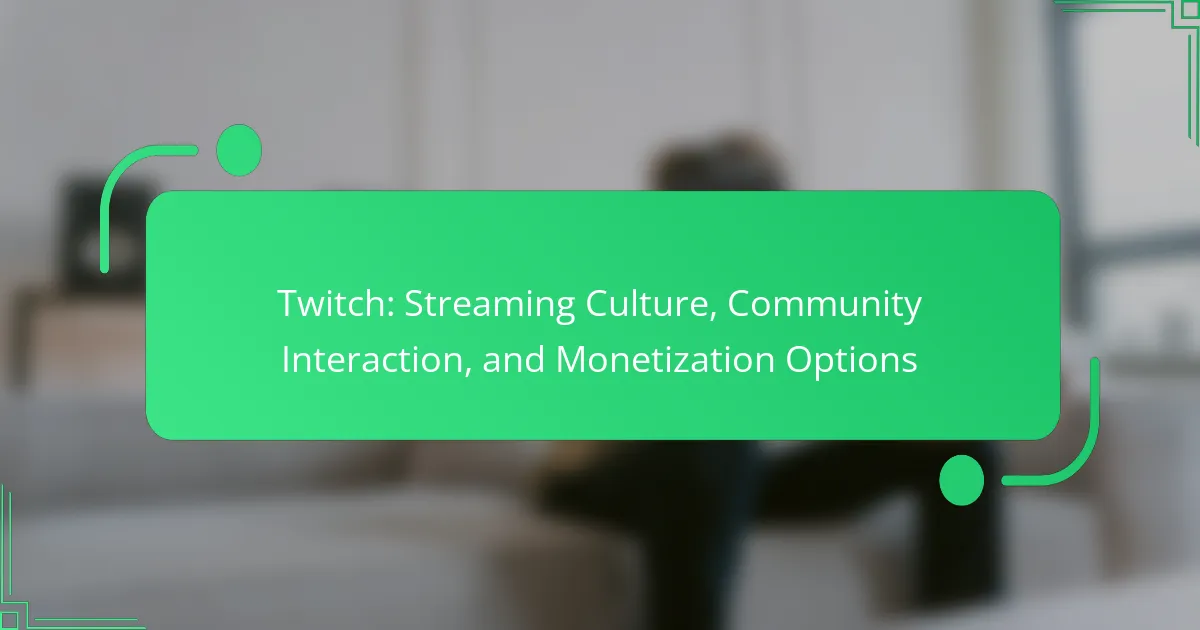The mobile game marketplace is evolving rapidly, influenced by user preferences for immersive gameplay and seamless access. Key trends include cross-platform play, subscription models, and augmented reality integration. Popular titles vary by region, showcasing distinct gaming cultures and preferences. User engagement is further enhanced by personalized experiences and community features, making understanding these dynamics essential for players and developers alike.

What are the key trends shaping mobile game marketplaces in 2025?
Mobile game marketplaces in 2025 will be shaped by trends like cross-platform play, subscription models, and augmented reality integration. These trends reflect evolving user preferences for immersive experiences and seamless access across devices.
The rise of cloud gaming services will enable instant access to a vast library of titles, enhancing user engagement. Additionally, the focus on user-generated content will empower players to create and share their own experiences, fostering community interaction.
Data privacy and security will become paramount, influencing marketplace policies and user trust. As a result, developers will prioritize transparent practices to attract and retain users in a competitive landscape.
Lastly, the integration of AI-driven personalization will enhance user experiences, tailoring game recommendations and in-game content to individual preferences, making gaming more engaging and enjoyable.
How do user demographics influence marketplace trends?
User demographics significantly influence marketplace trends in mobile gaming. Different age groups, genders, and geographic locations exhibit distinct preferences for game genres and spending habits. For instance, younger players tend to favor action and multiplayer games, while older demographics often prefer casual and puzzle games.
Additionally, gender disparities exist, with female players showing a preference for social and simulation games, which drives developers to create more inclusive content. Geographic factors also play a role; for example, Asian markets often prioritize mobile esports, whereas Western markets may focus on narrative-driven experiences.
These demographic insights help shape marketing strategies and game development, ensuring that offerings align with user preferences and maximize engagement. As a result, understanding demographics is crucial for success in the competitive mobile game marketplace.
Which technologies are driving innovation in mobile game distribution?
Cloud-based platforms and advanced algorithms are driving innovation in mobile game distribution. These technologies enhance user experience by personalizing content and optimizing delivery methods. For example, machine learning algorithms analyze player behavior to recommend games, while cloud gaming services allow instant access to titles without downloads. Additionally, blockchain technology is emerging in game distribution, ensuring secure transactions and ownership of in-game assets. These trends reflect a shift towards more user-centric and efficient mobile gaming ecosystems.

What are the most popular mobile game titles in various regions?
The most popular mobile game titles vary by region, reflecting local preferences and trends. In North America, titles like “Call of Duty: Mobile” and “Among Us” dominate. In Asia, “PUBG Mobile” and “Genshin Impact” lead the charts. Europe shows a mix with “Clash of Clans” and “Candy Crush Saga” being favorites. Latin America trends towards “Free Fire” and “Subway Surfers.” Each region’s preferences illustrate unique gaming cultures and user engagement strategies.
How do cultural preferences affect game popularity across different markets?
Cultural preferences significantly influence game popularity in various markets. Different regions exhibit unique tastes, which affect genre preferences and gameplay mechanics. For instance, Asian markets often favor multiplayer and social gaming experiences, while Western markets may lean towards single-player narratives.
Additionally, cultural themes resonate differently across demographics. Games incorporating local folklore or traditions often achieve higher engagement in specific regions. As a result, developers must adapt their offerings to align with cultural nuances to maximize appeal and success.
Market data shows that localized content can increase user retention by up to 30%. This highlights the importance of understanding cultural contexts in mobile game development.
What role do local developers play in shaping popular titles?
Local developers significantly influence popular titles in the mobile game marketplace by tailoring games to regional preferences. They understand local cultures, preferences, and trends, allowing them to create engaging content. Their unique insights lead to innovative gameplay mechanics and narratives that resonate with local audiences. As a result, these developers enhance user experience and drive higher engagement rates, contributing to the overall success of mobile games.

What are the primary user preferences in mobile gaming?
The primary user preferences in mobile gaming include engaging gameplay, social interaction, and in-game rewards. Players favor games that offer immersive experiences and opportunities for competition. A significant trend is the demand for cross-platform functionality, allowing seamless play across devices. Additionally, users increasingly prefer free-to-play models with optional purchases for enhanced content.
How do monetization strategies impact user engagement?
Monetization strategies significantly enhance user engagement by aligning incentives with gameplay experiences. Effective strategies, such as in-app purchases and subscriptions, create a sense of value and investment for players. For instance, games that offer exclusive content through these models often see increased retention rates. Additionally, free-to-play models attract a wider audience, fostering community interaction and competition, which further boosts engagement.
What features do users prioritize when choosing mobile games?
Users prioritize gameplay quality, graphics, and monetization model when choosing mobile games. Engaging gameplay ensures long-term retention, while appealing graphics attract initial interest. Additionally, transparent monetization models, such as fair in-app purchases, influence user satisfaction and loyalty. Other factors include social features, updates, and community engagement, which enhance the overall gaming experience.

How do mobile game marketplaces compare in terms of user experience?
Mobile game marketplaces vary significantly in user experience, impacting player engagement and satisfaction. Key factors include interface design, navigation ease, and personalized recommendations.
| Marketplace | Interface Design | Navigation Ease | Personalization |
|———————|——————|——————|——————|
| Google Play Store | User-friendly | High | Moderate |
| Apple App Store | Sleek | High | High |
| Steam | Detailed | Moderate | Low |
| Epic Games Store | Modern | High | Moderate |
| Amazon Appstore | Basic | Low | Low |
Apple App Store leads in personalization, enhancing user experience through tailored suggestions. Google Play Store excels in navigation, offering a straightforward path to discover new titles. Steam’s detailed interface caters to serious gamers but lacks in personalization. Epic Games Store combines modern design with high navigation ease, appealing to a wide audience. Amazon Appstore is less competitive, with basic design and low personalization.
Which platforms offer the best user interfaces for gamers?
Platforms that excel in user interfaces for gamers include Steam, Epic Games Store, Google Play, and Apple App Store. These platforms prioritize intuitive navigation, responsive design, and personalized recommendations.
Steam offers a comprehensive library with community features, while Epic Games Store emphasizes exclusivity and promotional deals. Google Play provides a vast selection of mobile games with user-friendly categories, and Apple App Store showcases curated lists and editorial content.
User preferences lean towards platforms that enhance gaming experiences through ease of use and accessibility. Features like search filters, user reviews, and social integration further improve the overall interface.
What are the common pain points users face in mobile game marketplaces?
Users face several common pain points in mobile game marketplaces, including high competition, poor discoverability, and monetization challenges. High competition makes it difficult for new titles to gain visibility. Poor discoverability can frustrate users, as they struggle to find games that match their preferences. Monetization challenges arise when developers must balance user experience with revenue generation strategies, often leading to unwanted ads or in-app purchases. Additionally, inconsistent updates and support can deter users from staying engaged with certain titles.

What unique attributes differentiate mobile game marketplaces?
Mobile game marketplaces differ through unique attributes such as exclusive titles, user interface design, payment models, and community features. Exclusive titles often attract users, while intuitive user interfaces enhance engagement. Diverse payment models, including subscriptions and microtransactions, cater to varying user preferences. Community features, such as forums and leaderboards, foster interaction among players.
How do exclusive partnerships influence marketplace dynamics?
Exclusive partnerships significantly impact marketplace dynamics by shaping competition and user engagement. These collaborations often lead to unique game offerings, enhancing player loyalty and attracting new users. For instance, exclusive titles can dominate market share, influencing consumer preferences and spending habits. Additionally, such partnerships can drive innovation, as developers leverage shared resources and expertise to create compelling experiences. As a result, the mobile game marketplace becomes more competitive, with exclusivity often dictating success.
What innovative marketing strategies are employed by leading marketplaces?
Leading marketplaces employ innovative marketing strategies like personalized user experiences, influencer partnerships, and data-driven advertising. These approaches enhance user engagement and drive sales. For example, mobile game marketplaces utilize targeted promotions based on player behavior, optimizing user acquisition. Additionally, leveraging social media platforms allows for real-time interaction and community building, fostering brand loyalty.

What are the rare attributes that can enhance user loyalty in mobile gaming?
Rare attributes that enhance user loyalty in mobile gaming include personalized experiences, exclusive in-game content, community engagement features, and adaptive difficulty levels. Personalized experiences tailor gameplay to individual preferences, increasing satisfaction. Exclusive in-game content creates a sense of ownership and uniqueness. Community engagement features foster social connections, enhancing retention. Adaptive difficulty levels maintain user interest by adjusting challenges to skill levels.
How do community features contribute to player retention?
Community features significantly enhance player retention by fostering social connections and engagement. Players are more likely to stay in games that offer robust community interactions, such as chat functions, guilds, and user-generated content. These features create a sense of belonging and commitment among players.
Additionally, regular community events and challenges keep the gameplay fresh and encourage players to log in frequently. For instance, games that implement leaderboards or cooperative missions motivate players to return and compete or collaborate with friends.
Moreover, the integration of feedback systems allows developers to address player concerns, making users feel valued and heard. This responsiveness can lead to increased loyalty and prolonged game engagement.
Overall, community features serve as crucial retention tools in the competitive mobile game marketplace, impacting user preferences and overall satisfaction.
What role does cross-platform compatibility play in user satisfaction?
Cross-platform compatibility significantly enhances user satisfaction by allowing seamless gameplay across various devices. Players appreciate the flexibility to access their favorite titles on smartphones, tablets, and consoles without losing progress. This compatibility fosters a larger community, enabling players to connect and compete regardless of their chosen platform. Additionally, it encourages developers to create more engaging and diverse gaming experiences, ultimately benefiting the mobile game marketplace.
What best practices can developers adopt to optimize user experience in mobile game marketplaces?
Developers can enhance user experience in mobile game marketplaces by focusing on intuitive design, quick load times, and personalized recommendations. Prioritizing user feedback leads to continuous improvement. Implementing A/B testing helps identify effective features. Regular updates keep content fresh and engaging.



